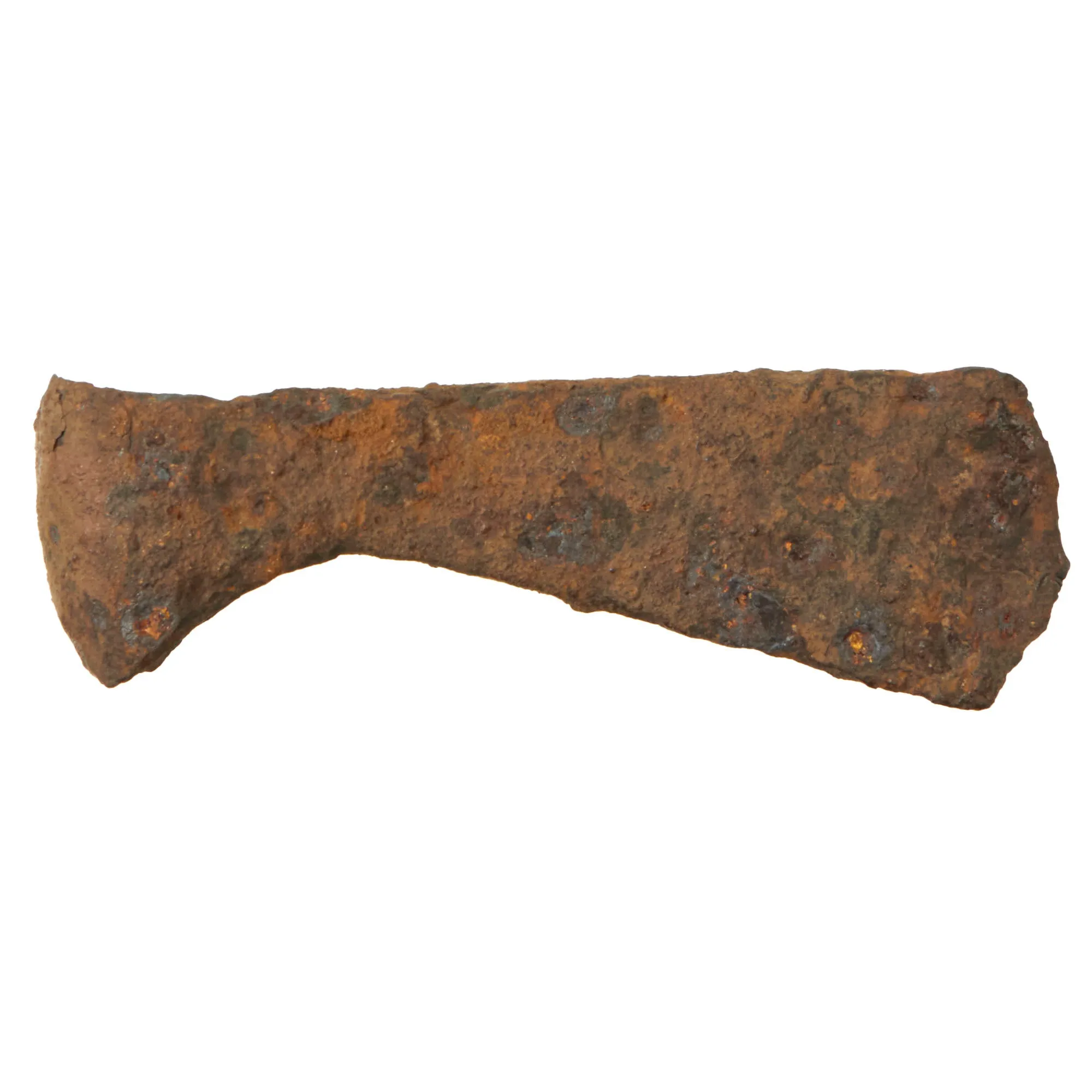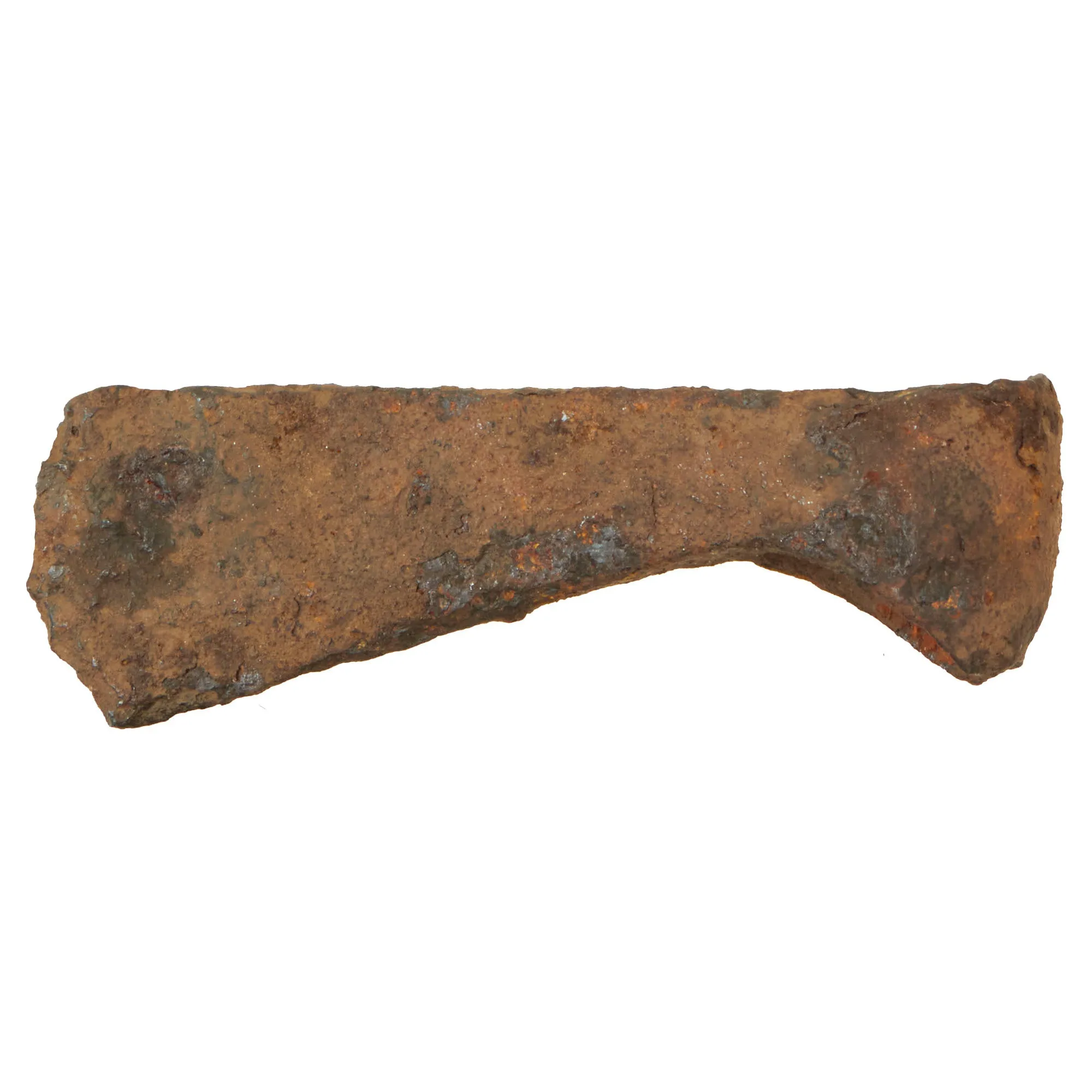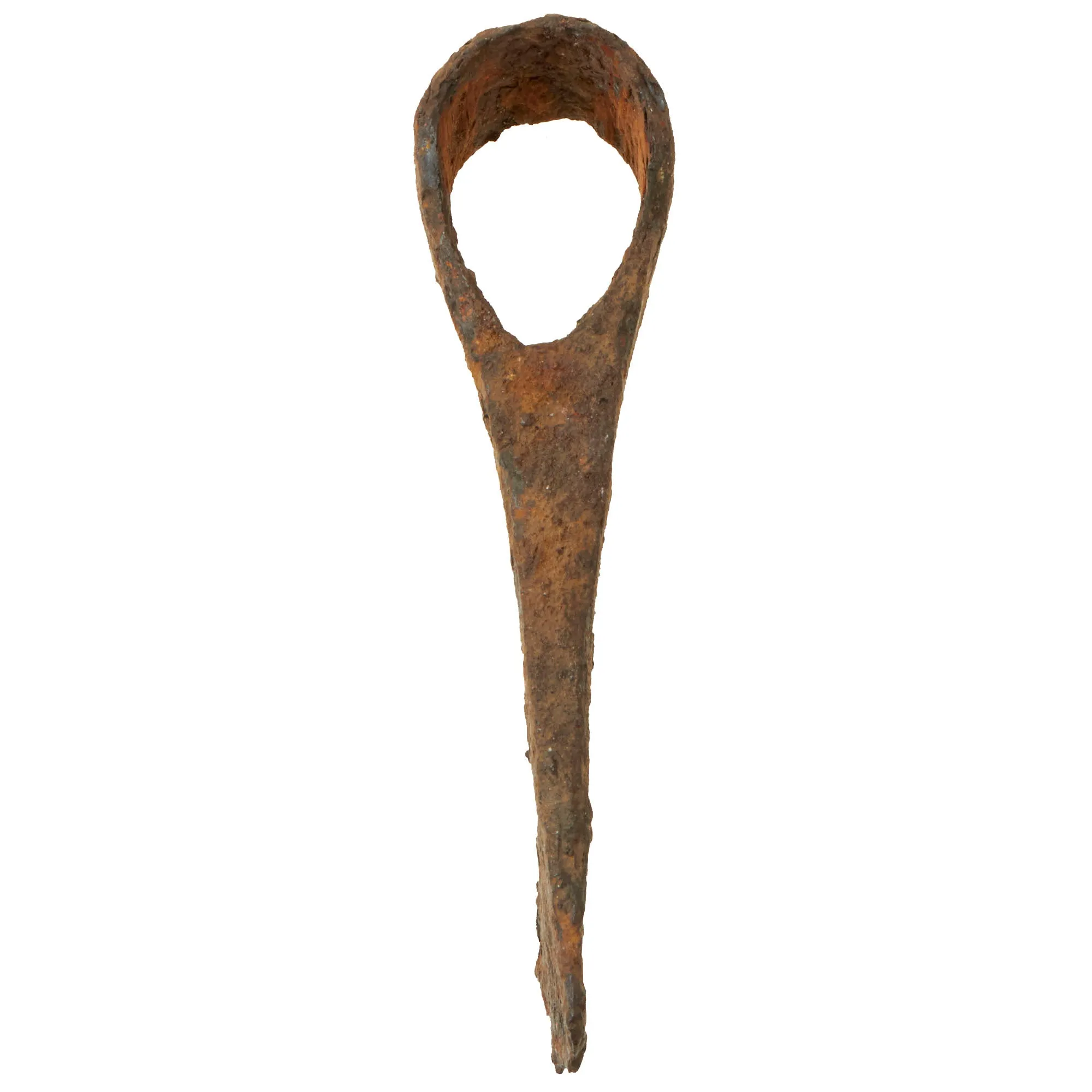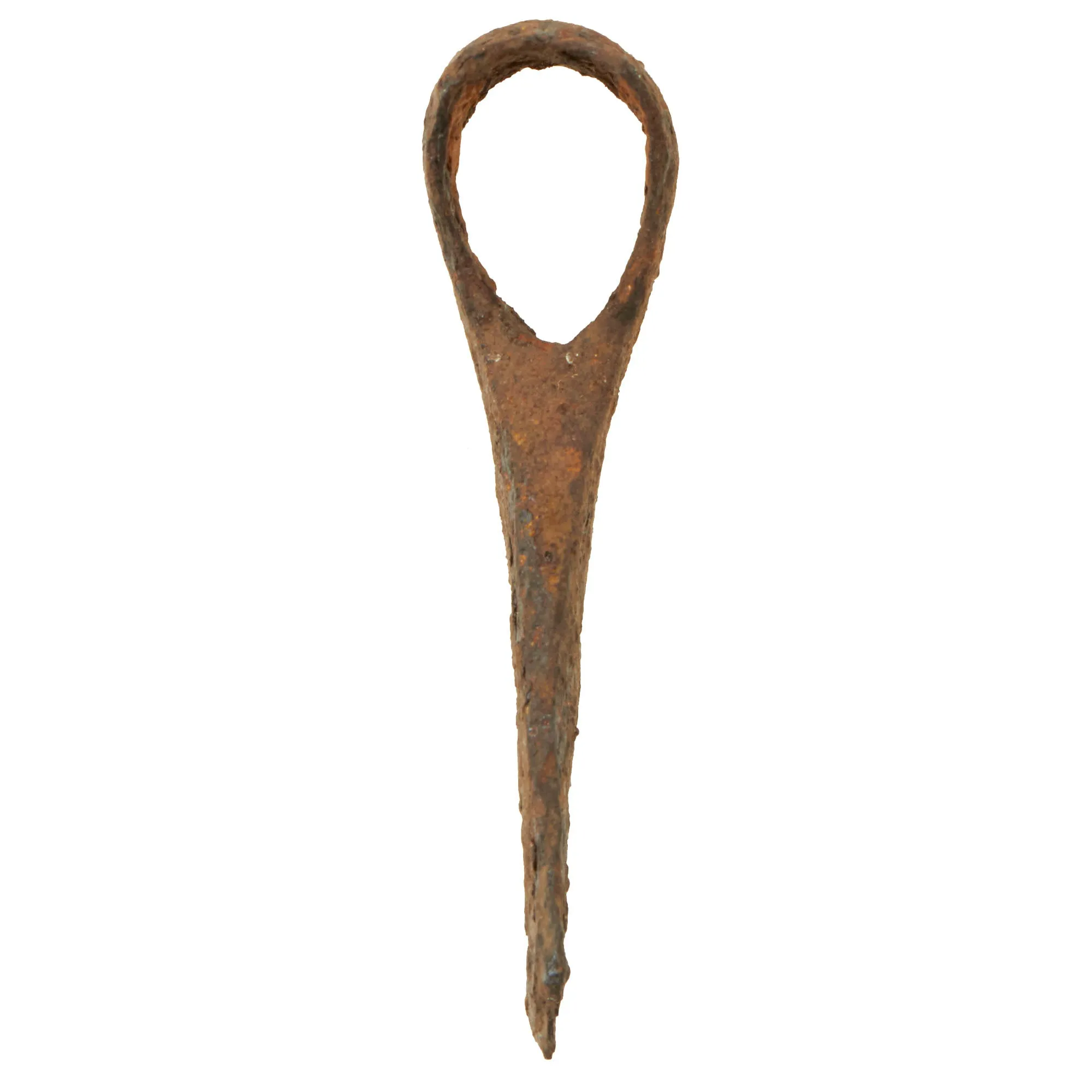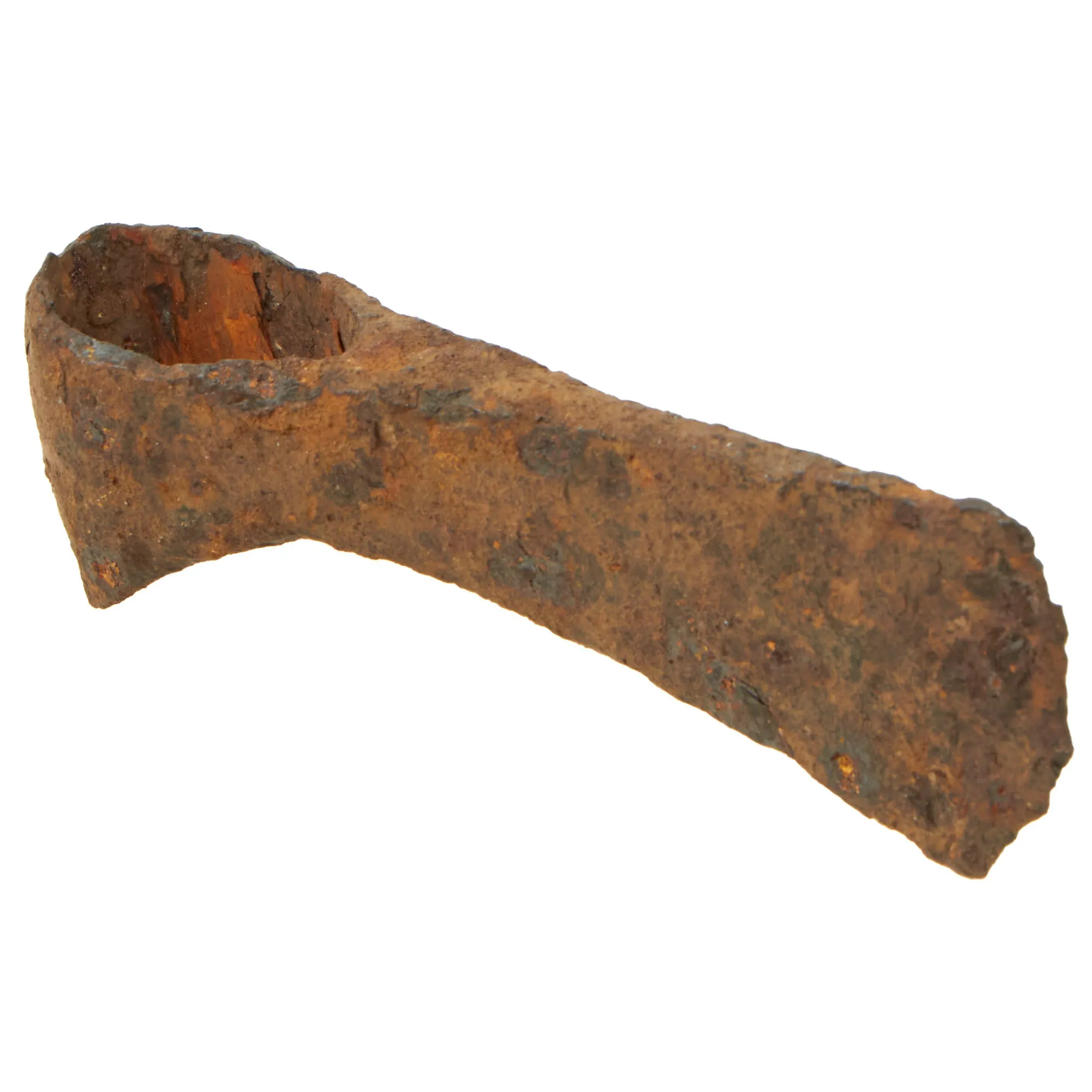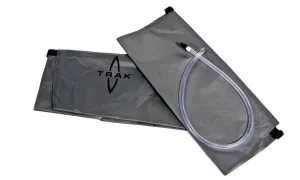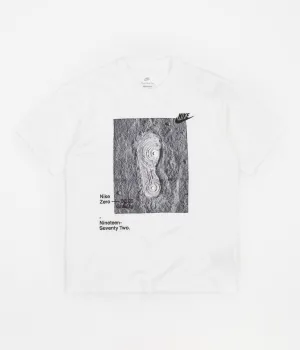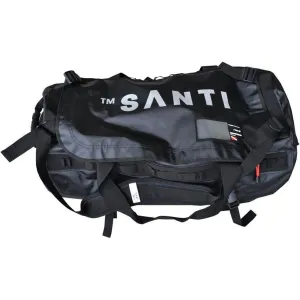Original Item: Only One Available. This is a remarkable and authentic piece of history - a trade tomahawk head that was likely made by a British or American blacksmith during the 17th and 18th century. The tomahawk's head is in relic condition with heavy pitting and oxidation, telltale signs of having been ground dug. The blade is designed for cutting and chopping, and was likely used for tasks such as felling small trees, building structures and making firewood. The handle is not present but there is still some pieces attached to the walls of the socket.
As the tomahawk head was excavated, there is the expected heavy pitting and oxidation present. It does not appear that any attempts were made to restore or clean it, just the way you like to find them, “as is”. The length of the head of the tomahawk measures approximately 5 1/4 inches with an edge width of 1 ¾ inches. There are no markings visible on either side of the cheek.
A great piece of history that comes more than ready for further research and display.
Cherry Valley Massacre
The Cherry Valley massacre was an attack by British and Iroquois forces on a fort and the town of Cherry Valley in central New York on November 11, 1778, during the American Revolutionary War. It has been described as one of the most horrific frontier massacres of the war. A mixed force of Loyalists, British soldiers, Senecas, and Mohawks descended on Cherry Valley, whose defenders, despite warnings, were unprepared for the attack. During the raid, the Seneca in particular targeted non-combatants, and reports state that 30 such individuals were killed, in addition to a number of armed defenders.
The raiders were under the overall command of Walter Butler, who exercised little authority over the Indian warriors on the expedition. Historian Barbara Graymont describes Butler's command of the expedition as "criminally incompetent". The Seneca were angered by accusations that they had committed atrocities at the Battle of Wyoming, and the colonists' recent destruction of their forward bases of operation at Unadilla, Onaquaga, and Tioga. Butler's authority with the Indigenous People was undermined by his poor treatment of Joseph Brant, the leader of the Mohawks. Butler repeatedly maintained that he was powerless to restrain the Seneca, despite accusations that he permitted the atrocities to take place.
During the campaigns of 1778, Brant achieved an undeserved reputation for brutality. He was not present at Wyoming — although many thought he was — and he along with Captain Jacob (Scott) of the Saponi (Catawba) actively sought to minimize the atrocities that took place at Cherry Valley. Given that Butler was the overall commander of the expedition, there is controversy as to who actually ordered or failed to restrain the killings. The massacre contributed to calls for reprisals, leading to the 1779 Sullivan Expedition which saw the total military defeat of the Iroquois in Upstate New York, who allied with the British.




